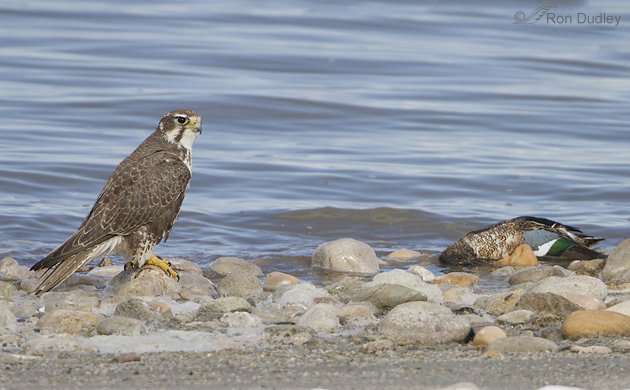
Ron Dudley is an amazing nature photographer who is based in northern Utah. Since he retired from being a high school teacher in 2003 he has really focused on getting amazing images and his blog, Feathered Photography, is loaded with them. (Seriously, click on through and see some amazing images.) To me, two things really set Ron apart from many other nature photographers. One is his focus on ethical photography. He doesn’t bait birds, call them in, or otherwise mess with their natural behaviors in order to get his superior images. The other is tied to this focus on ethical photography. Because he photographs birds acting naturally he can use the images he gets to tell a story. Ron’s narratives, full of the observations of someone who clearly loves his subjects and wishes to know as much about them as he can, set his blog apart from most nature photography blogs. We are pleased to host this guest post and hope it is the first of many to feature Ron’s works on 10,000 Birds.
On 11 November 2012 I was leaving Antelope Island in the Great Salt Lake after a fruitless morning of trying to photograph birds in a snowstorm and poor light when a female Prairie Falcon ambushed this Northern Shoveler on the water not far from the causeway on which I was driving.
This shot was taken within a couple of seconds of the attack. I was far away from the duck but you can still see that it is bleeding heavily.
It struggled for a few seconds and then it died in the water.
With the duck dead in the water the falcon would alternate between perching on the causeway while watching the duck and occasionally flying over it for an apparent closer look. I tried to get a shot that included the duck and the passing falcon but this was as close as I got.
This is one of the perches on the causeway the falcon chose to keep an eye on the shoveler. All the while the duck was being washed closer to the shore by the waves and the breeze.
Here she is making one of her very low passes over the duck.
The closer the dead duck came to shore the closer to the shore the falcon perched. I’m fairly certain that it was the deliberate strategy of the bird to kill the duck on the water and wait for it to come ashore. Falconers have told me that it would have been difficult, if not impossible, for her to lift the duck out of the water and fly with it.
By now the shoveler has finally washed to shore and the falcon is approaching it.
She claims her prize.
This neck-biting maneuver looked to me to be the well-known “death bite” of the falcon, where it uses its tomial tooth (falcon tooth), a sharp projection on the upper mandible that fits into a notch on the lower mandible, to bite the spinal cord and render the prey helpless. The duck was already dead but I suspect it’s an instinctive behavior.
Here the falcon is beginning to pluck the feathers on the back of the neck which is where she began her meal. After this image was taken she stood on the duck to get proper leverage for pulling and tugging but soon the waves “rocked the boat” too much for comfort so…
…she began to pull the shoveler higher up on the shore and away from the waves.
Doing so required a huge effort for her – another reason I’m convinced that she couldn’t have lifted the duck out of the water and flown with it.
For a split second she gave me direct eye contact with a nice wing spread.
Once she had the duck in a more suitable location she resumed her meal. After this the scene became a little gruesome so I’ll spare you those images.
This bird was “tamer” than most of her species because she had become accustomed to hunting the narrow causeway for ducks and was relatively acclimated to all the vehicular traffic. The fact that I was shooting from my pickup helped me get close.
My time with this falcon was an experience I won’t soon forget.


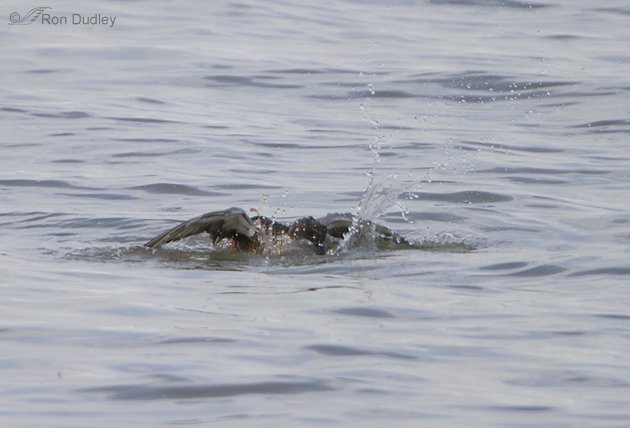
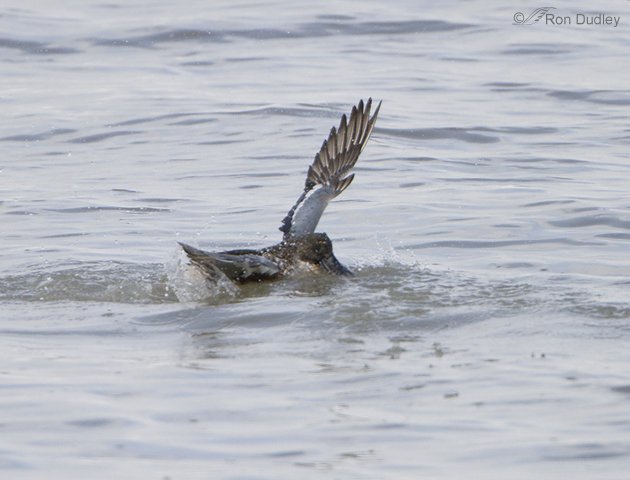
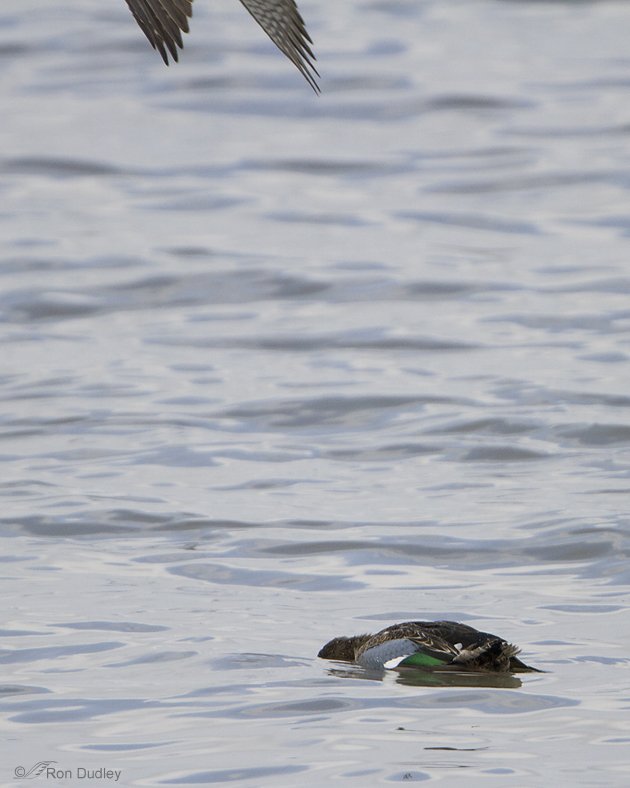
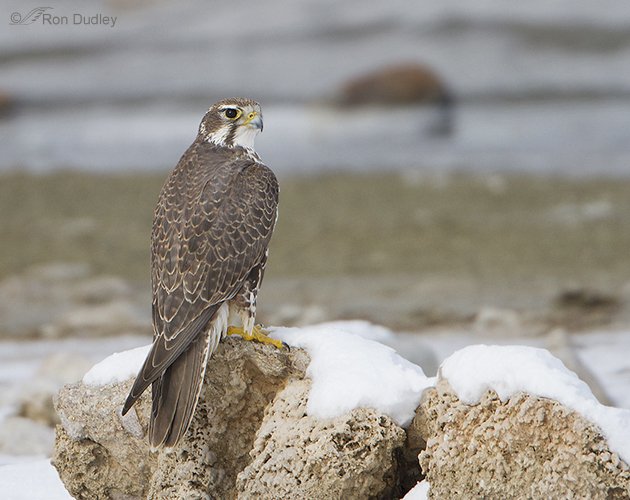
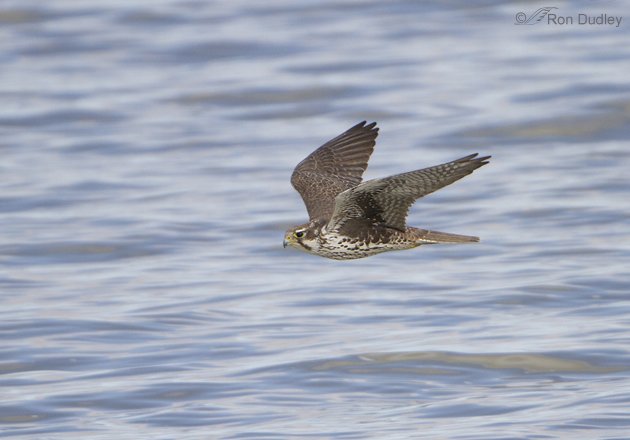
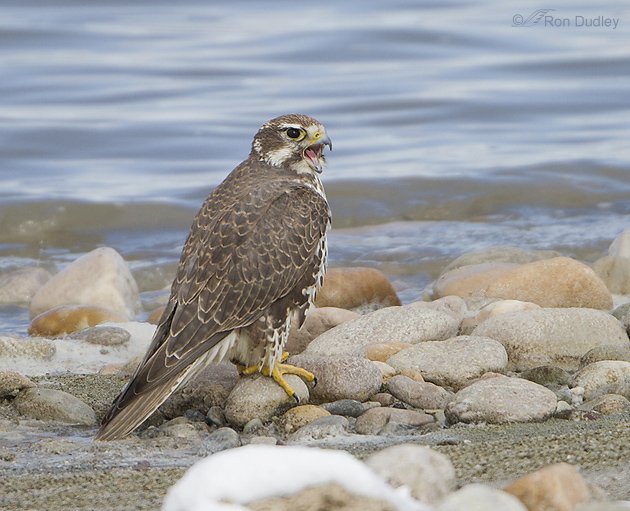

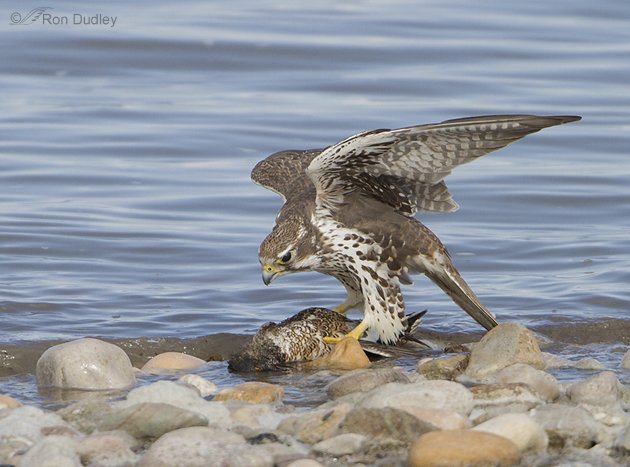
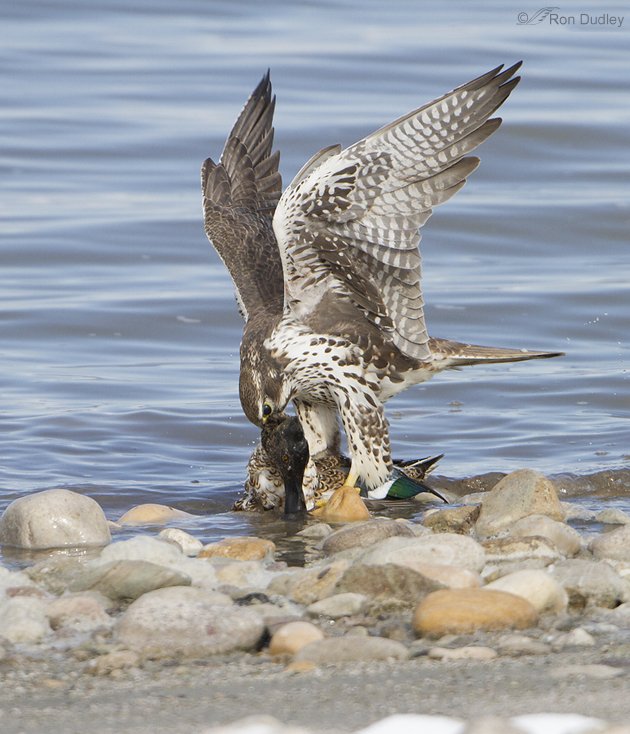
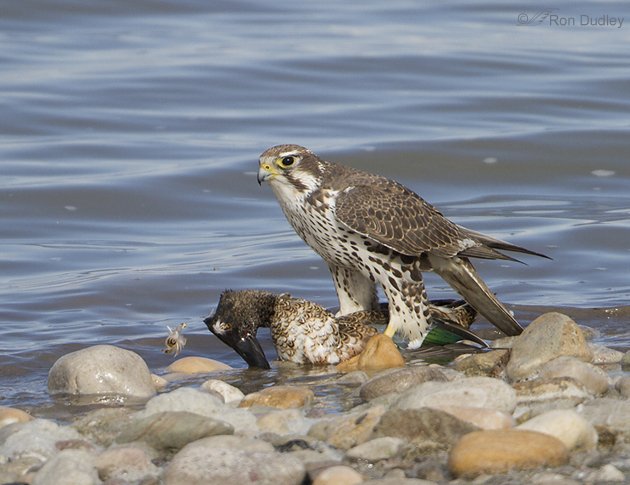
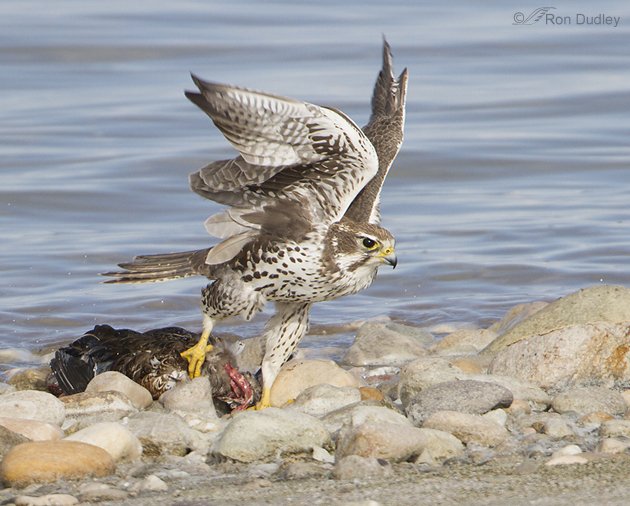
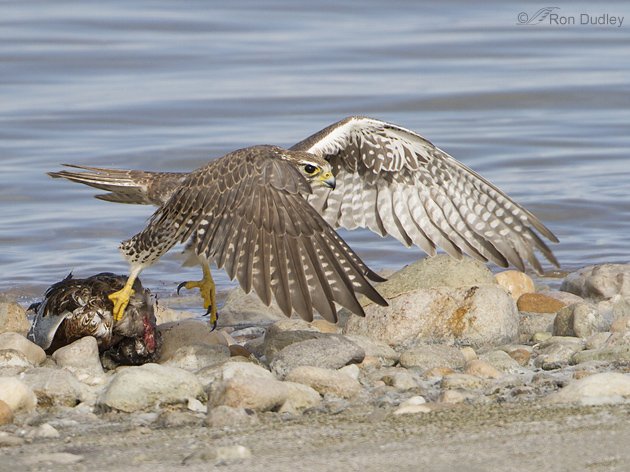
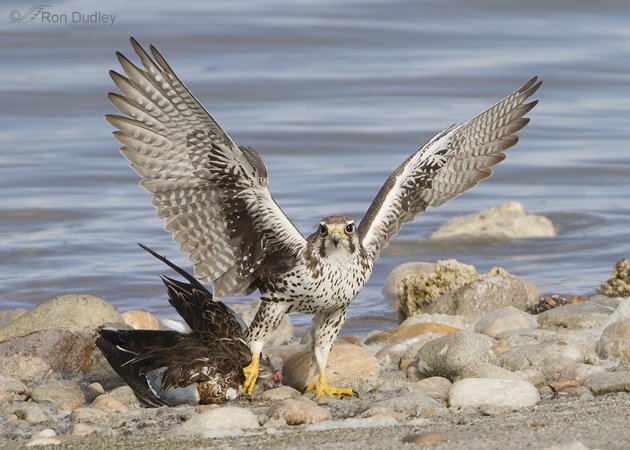
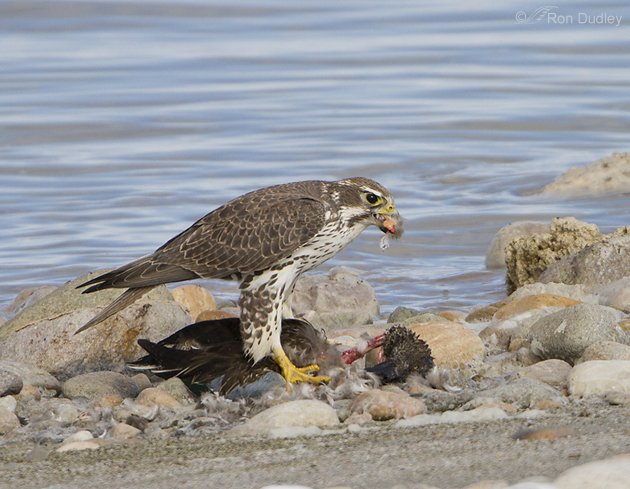











Vehicles are perfect hides! Henry Ford must have been a birder! 🙂
Ron is at the top of my list in terms of favorite wildlife photographers, precisely for the reasons you state: He has a very high ethical benchmark, and he cares deeply for his subjects. That philosophy permeates his photography and, for me, makes the resulting images that much more precious — by virtue of how carefully they were obtained. They’re not just brilliant photos. They are revealing portraits of the animal’s intimate world, taken by a thoughtful and compassionate observer.
My goodness, those images are stunning portraits of animal behavior. Definitely good enough to grace the pages of National Geographic.